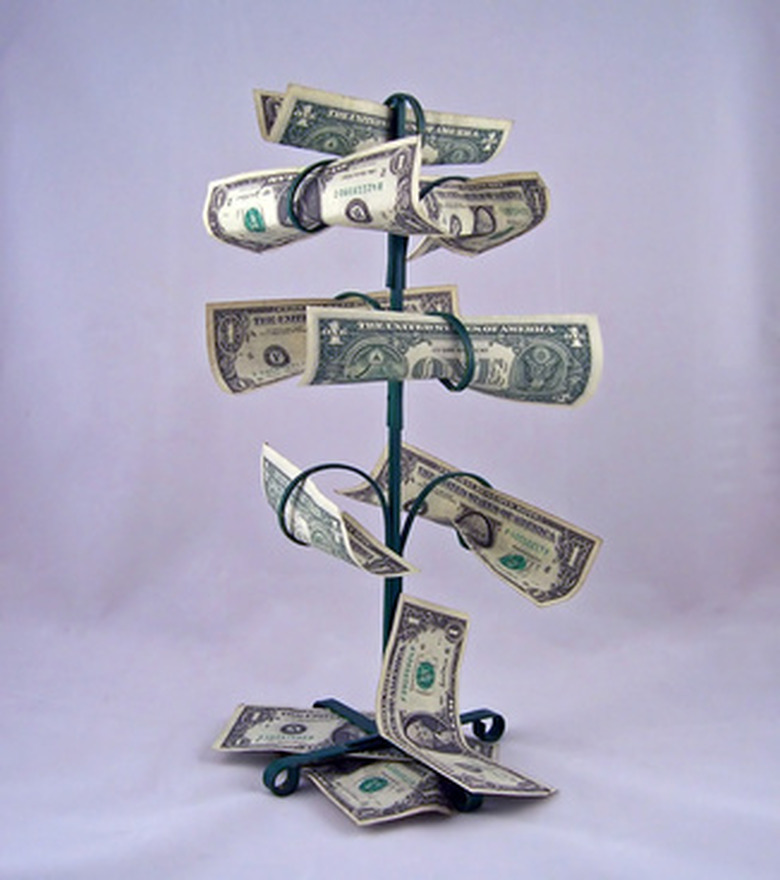Brown Spots On Pachira Plant Leaves
The Pachira Aquatica, money tree or Malabar chestnut is a fast-growing tree from Central and South America. It is commonly grown as a houseplant or as a bonsai plant. If planted in the ground in a tropical climate, this tree can reach 20 to 25 feet tall. It produces football-shaped seedpods that contain 12 or more edible nuts. It is often associated with good luck but can become invasive in conducive environments.
Watering
The Pachira tree is sensitive to too much water and can develop brown spots on the base of its leaves if it is kept too wet. Conversely, the plant does not respond well to drought: Brown spots can occur on the tips of leaves if its conditions are too dry. Humidity under 50 percent can cause stress to this tree that can also result in brown spots on its leaves. Misting it every day with a fine spray of water can help keep the humidity at a level conducive to this plant.
- The Pachira Aquatica, money tree or Malabar chestnut is a fast-growing tree from Central and South America.
- Conversely, the plant does not respond well to drought: Brown spots can occur on the tips of leaves if its conditions are too dry.
Insect Pests
Mealybugs and other sucking insects can attack the Pachira tree and cause brown spots on its leaves. Mealybugs look like small, white fuzzy spots, no larger than 0.15 inches. You might not recognize them as insects at first. They suck fluids from the plant and can stress the plant. Control mealybugs with an insecticidal soap spray as soon as you notice them. Ants feed on the excretion of mealybugs, so keeping them under control will help prevent an invasion of ants.
Fertilizer
An unhealthy plant is susceptible to disease, insect attack and general weakening. To keep your Pachira money tree in the best of health, feed it with a balanced plant food with an N-P-K ratio of 10-10-10 four or five times a year, during its active growing period, which lasts from spring through late summer. Plants grown as houseplants especially need fertilizer regularly. You needn't fertilize your plant in winter unless it begins to develop brown spots on its leaves.
- Mealybugs and other sucking insects can attack the Pachira tree and cause brown spots on its leaves.
- Control mealybugs with an insecticidal soap spray as soon as you notice them.
Lighting
The Pachira needs full sun–at least 8 hours every day–to grow strong and healthy and remain that way. Houseplants can develop brown leaf spots if you keep them in an area where the amount of natural or artificial light is too low for the plant's needs. If brown spots occur, move your plant to a brighter location or introduce additional artificial lights to give it the light it needs. You can keep your Pachira outdoors in summer to give it plenty of light. If you move it indoors in fall, be sure to place it near a window where it will get plenty of natural light, or hang a fluorescent shop light above it and keep it turned on for 12 hours each day.
Disease
Brown spots can sometimes occur on the money tree when a fungal disease known as leaf spot occurs. This disease is one of the types of fungi included in the Phomopsis family of plant diseases. The first symptoms you might notice are yellow spots on the tips of new leaves. It later changes to reddish brown and eventually can cause new shoots to die. Entire branches can die if left untreated. Commercial fungicides can be effective in ridding your plant of this disease.
- The Pachira needs full sun–at least 8 hours every day–to grow strong and healthy and remain that way.
- Houseplants can develop brown leaf spots if you keep them in an area where the amount of natural or artificial light is too low for the plant's needs.
